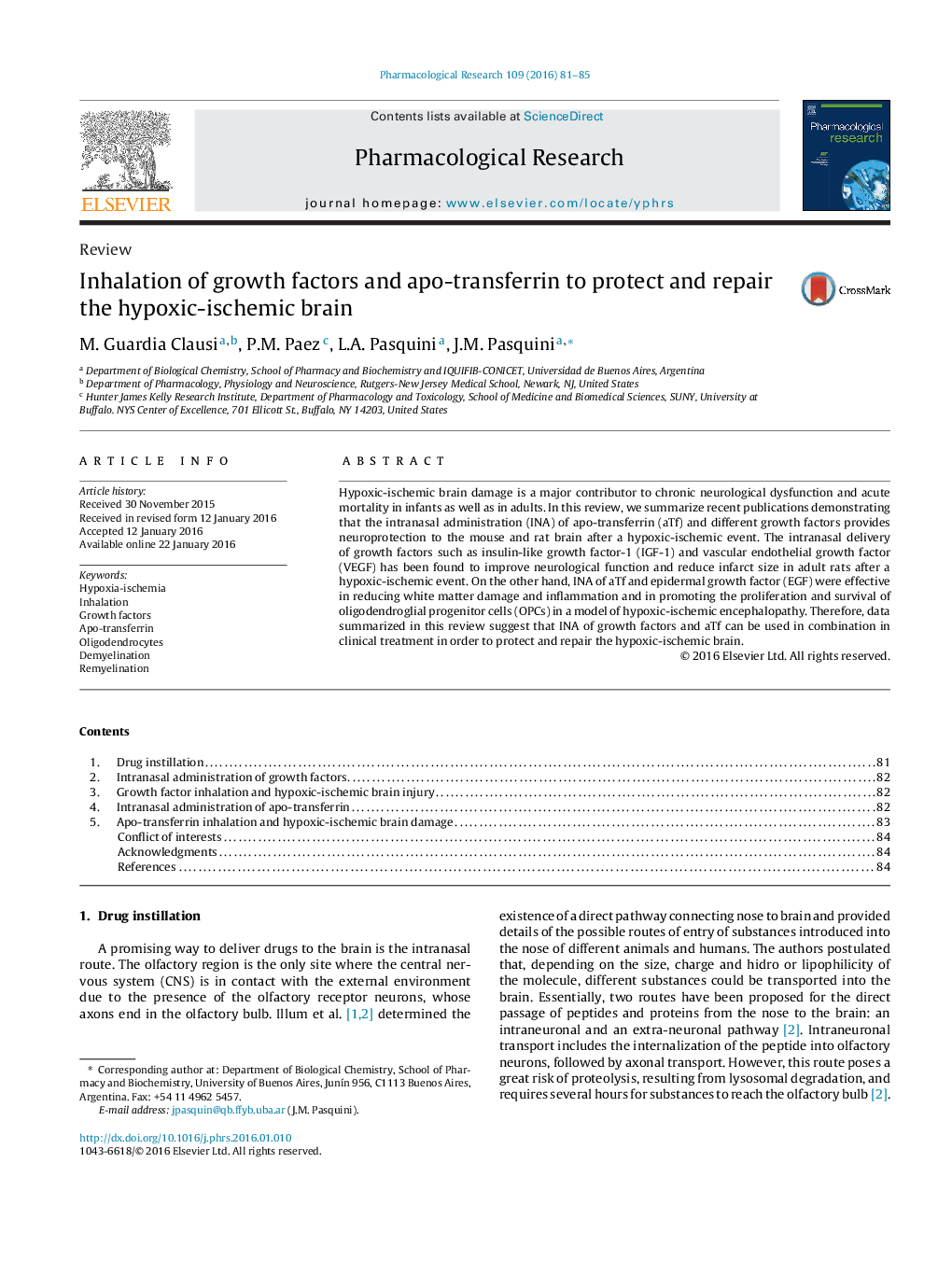| Article ID | Journal | Published Year | Pages | File Type |
|---|---|---|---|---|
| 2562710 | Pharmacological Research | 2016 | 5 Pages |
Hypoxic-ischemic brain damage is a major contributor to chronic neurological dysfunction and acute mortality in infants as well as in adults. In this review, we summarize recent publications demonstrating that the intranasal administration (INA) of apo-transferrin (aTf) and different growth factors provides neuroprotection to the mouse and rat brain after a hypoxic-ischemic event. The intranasal delivery of growth factors such as insulin-like growth factor-1 (IGF-1) and vascular endothelial growth factor (VEGF) has been found to improve neurological function and reduce infarct size in adult rats after a hypoxic-ischemic event. On the other hand, INA of aTf and epidermal growth factor (EGF) were effective in reducing white matter damage and inflammation and in promoting the proliferation and survival of oligodendroglial progenitor cells (OPCs) in a model of hypoxic-ischemic encephalopathy. Therefore, data summarized in this review suggest that INA of growth factors and aTf can be used in combination in clinical treatment in order to protect and repair the hypoxic-ischemic brain.
Graphical abstractFigure optionsDownload full-size imageDownload high-quality image (228 K)Download as PowerPoint slide
